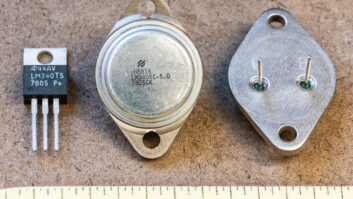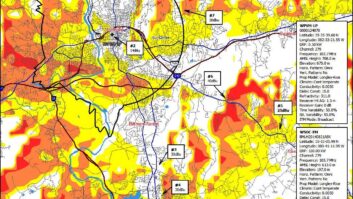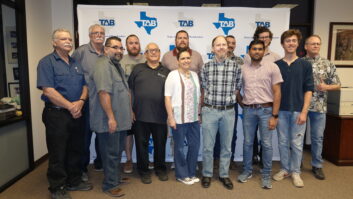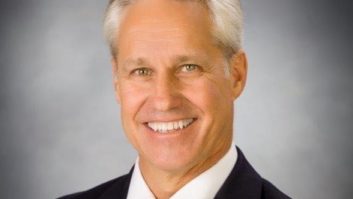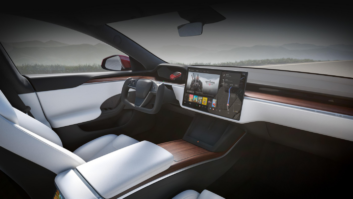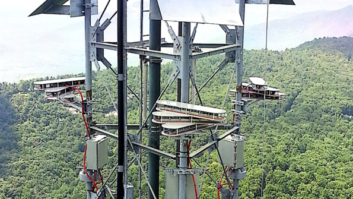This is one in a series summarizing notable comments being filed to the FCC on its AM revitalization NPRM. Read other summaries at radioworld.com/amcomments.
Nonbroadcast interference to AM radio is not going away.
That’s according to engineer Sam Brown, who believes the FCC is asking the right questions when it comes to helping those who own stations on the beleaguered AM band.
His is one of the now 200 or so filings to the FCC regarding the agency’s rulemaking on AM revitalization. Brown, a radio and telecom professional in the Washington area is also a former AM station owner. Currently, he works for NPR’s Public Radio Satellite System, however he filed his comments as an individual.
The common use of compact fluorescent lights, computers and appliances with microprocessors results in so many interference sources that it’s impossible to track them all, he tells the commission. Reduced audience and multiple alternatives to AM have created less public demand for noninterfering equipment, he tells the agency. “Imagine if a new light bulb had been brought to market in 1966, but it interfered heavily with AM reception. This was [a] time when listeners routinely tuned into stations that were well below 2 mv/m. If people at the far end of Long Island couldn’t get WABC, or folks on Cape Cod lost WRKO, or Washington no longer had cool top 40 from Baltimore’s WCAO, it would have been unacceptable. Most purchasers would have returned their bulbs, complaining that ‘my radios didn’t work when I used your product.’ Apartment buildings and condos would have banned them due to interference with neighbors’ reception.”
He continues: “Today, the remaining niche AM listeners know that “it works in some places and not others,” or “some noise is normal,” and most people listen to FM, MP3s or Internet radio.”
Brown supports the concept favored by many previous filers to open a special application window for those AM owners who would like to apply for an FM translator. “Many AM stations, particularly those outside of urban areas, serve several distinct communities within their coverage area. Additionally, directional stations often have two or three lobes in their patterns. There are also situations where a suitable antenna site for a translator that would best serve the station’s coverage may be unavailable, infeasible or prohibitively costly” he writes. In those cases, a single FM transmission may make that AM viable, according to the engineer.
Because some have filers have suggested to the FCC that no new AMs should be licensed, and others should stop operations, Brown suggests this argument be carried further and that those AMs “benefitting sufficiently” from an FM translator should be able to discontinue their AM operation. “There are already AM stations which mention only the FM translator frequency, and a listener would not even know they have an AM signal unless aware of the meaning of a quickly-uttered legal ID. AM power, towers, maintenance and land may be unnecessary expenses undertaken primarily to feed a 250 W FM ‘station,’ which just happens to be a translator.”
The 87.7 MHz frequency should be available for translators of AM stations in areas where no TV station transmits on Channel 6, he suggests. Regarding so-called “Franken FMs,” our words, not his, low-power TV stations on Channel 6 that transmit their analog audio on this signal have demonstrated an ability to garner “significant’ audience, he tells the commission. “Channel 200, 87.9 MHz in the reserved band is only assigned to two stations nationwide, thus leaving 87.7 MHz available in many places that would otherwise be out of frequencies,” according to Brown. He suggests a larger discussion needs to take place about expanding the FM band to accommodate AMs, but says this change could be implemented regardless of whether a larger expansion occurs or not.
Regarding HD Radio, all-digital operation should continue to be tested and encouraged if it works well, however he recommends eliminating hybrid IBOC AM altogether: “It is a ‘clear failure,’ as the coverage is very limited, the interference with adjacent and second-adjacent stations is substantial, and the switching back and forth between digital and analog audio bandwidth and fidelity makes it virtually unlistenable.” He also recommends FM stations should be encouraged to lease HD multicast channels to AM broadcasters.
The deadline to file reply comments to Docket 13-249 is today, March 20.
Watch our page radioworld.com/amcomments for summaries of other comments to the FCC NPRM.





